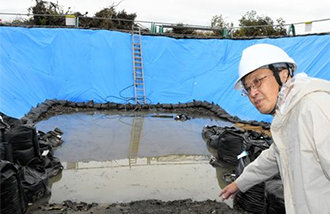U.S. Military in Iraq: How to Capture An Invisible Enemy
U.S. Military in Iraq: How to Capture An Invisible Enemy
Posted December. 03, 2003 23:00,
The U.S. military in Iraq is showing intelligence weaknesses in its operation to capture Iraqi insurgents. While the insurgents are mounting ambush attacks and are clearly aware of the routes and locations of the U.S. and coalition forces, the U.S. military leadership has presented only guesses and are still uncertain about the identity of its enemy. The U.S. military leadership, which has previously shown reluctance towards the creation of a paramilitary force, is even seriously considering the use of militiamen.
Looking for attackers in black: Since November, U.S. forces have waged major operations such as Iron Hammer in its bid to identify and capture insurgents. Most of the intelligence comes from Iraqi intelligence agents, prisoners, or the Iraqi police. However, gathering reliable intelligence is not easy as most of the prisoners are low-ranking combatants with quite a number of local police who are ex-convicts. Intelligence from local sources also lacks credibility.
For instance, right after the Samarra battle on November 30, the U.S. military officials announced that the attackers were the Fedain militia in black uniforms. However, the Financial Times cited the mocking of Samarra residents who questioned Are we also the militia if we wear black?
Identity of insurgents at large: The U.S. military leadership simply categorizes insurgents into loyalists and dead-enders. Military officials are uncertain about the identity of their enemy-- whether they are military or Baathist remnants of Saddam Husseins dictatorship, local Muslim extremists, or if the enemy is linked to Al Qaeda.
There were divisions even within the U.S. military with regards to the guerillas in the Samarra battle. While the officials at the site reported that the guerillas were organized, the U.S. leadership said that the attackers seemed untrained, using only small arms to attack tanks and armored vehicles.
On December 2, U.S. forces mounted an operation in northern Kirkuk to capture Izzat Ibrahim al-Douri, a veteran political ally of Husseins, but there is still no definite evidence that he is the mastermind of guerilla resistance.
To defeat enemy with a paramilitary unit: On December 2, the Washington Post reported that the U.S. military leadership will create a paramilitary unit. The report said that the five largest political parties in Iraq including the Iraqi National Congress and the Kurdistan Democratic Party will contribute a total of 750 to 850 militiamen to create a new counterterrorism battalion within the Iraqi Civil Defense Corps that would initially operate in and around Baghdad.
The Bush administration previously opposed the creation of a paramilitary unit, fearing that it could be used after the U.S. occupation ends to suppress political dissent or target enemies. However, the Washington Post reported that the administration began to turn its eyes to the intelligence-gathering capabilities of militiamen since the U.S. military leadership and Iraqs governing council reached an agreement to hand over sovereignty in the first half of next year.
Rae-Jeong Park ecopark@donga.com







